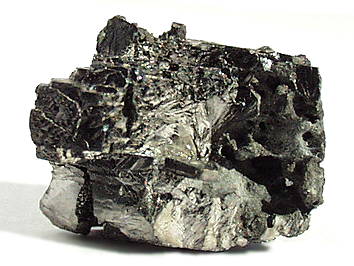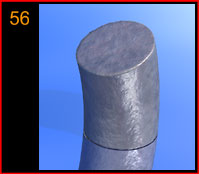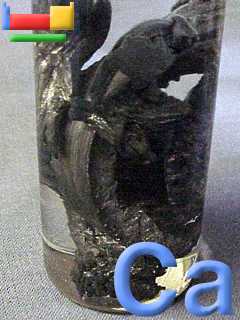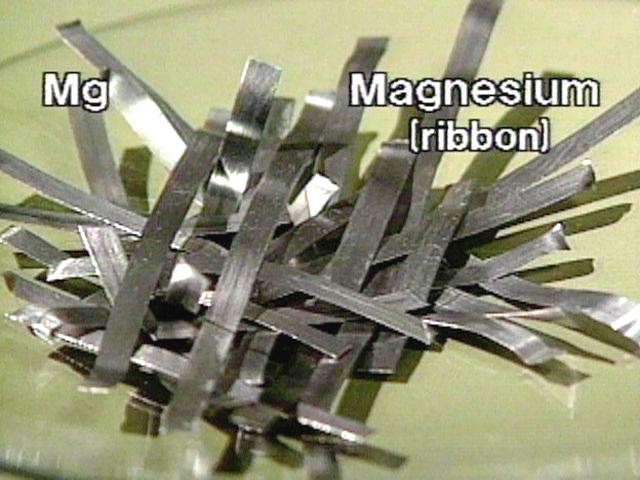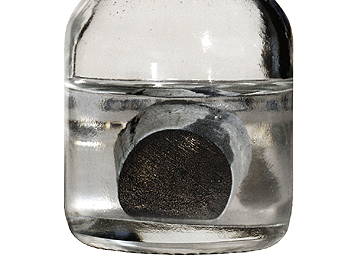

The alkaline earth family is the second most reactive group, and it's elements can't be found free in nature. They are called "alkaline" earth metals because they form "alkaline" solutions, hydroxides, when they react with water . This term "Alkaline" means that the solution has a pH greater than seven and is basic. Thus, the alkaline earth metals form very basic solutions and are excellent reducing agents. What differentiates group II from group I (alkali metals) is the term "earth." "Earth" was the alchemists term for the oxides of alkaline earth metals. These oxides were believed to be new elements.
*Lastly, the alkaline earth metals are a family because they share many properties. These properties result from each element having two valence electrons in their outer shells. The family's elements are so reactive because they need to lose two electrons in order to obtain a stable octet electron configuration. All the metals have low ionization energies and low electron affinities.
*Generally, alkaline earth metals are silvery white metals with high melting points, high boiling points, and low densities. Generally they are softer and stronger than most metals. But all of these properties are exceeded by the alkali metals.
*In addition, they are all ductile, lustrous, and malleable metals.
*All alkaline earth metals react readily with water, conduct electricity well, burn in air, and are powerful reducing agents.
*Also, many of the elements form self protective layer that prevent further oxidation in air.
The elements that make up group two, the alkaline earth metal family, are:
Beryllium
Barium Calcium Magnesium
Strotium Radium
Interesting Facts:
All of the alkaline earth metals are found in compound form with in the earth's crust.
Calcium is the 5th most abundant element in the earth's crust.
Magnesium is the 8th most abundant element in the earth's crust, but it is the most commercially used.
Barium's density and dullness to X-rays enables scanning of internal body tissues.
